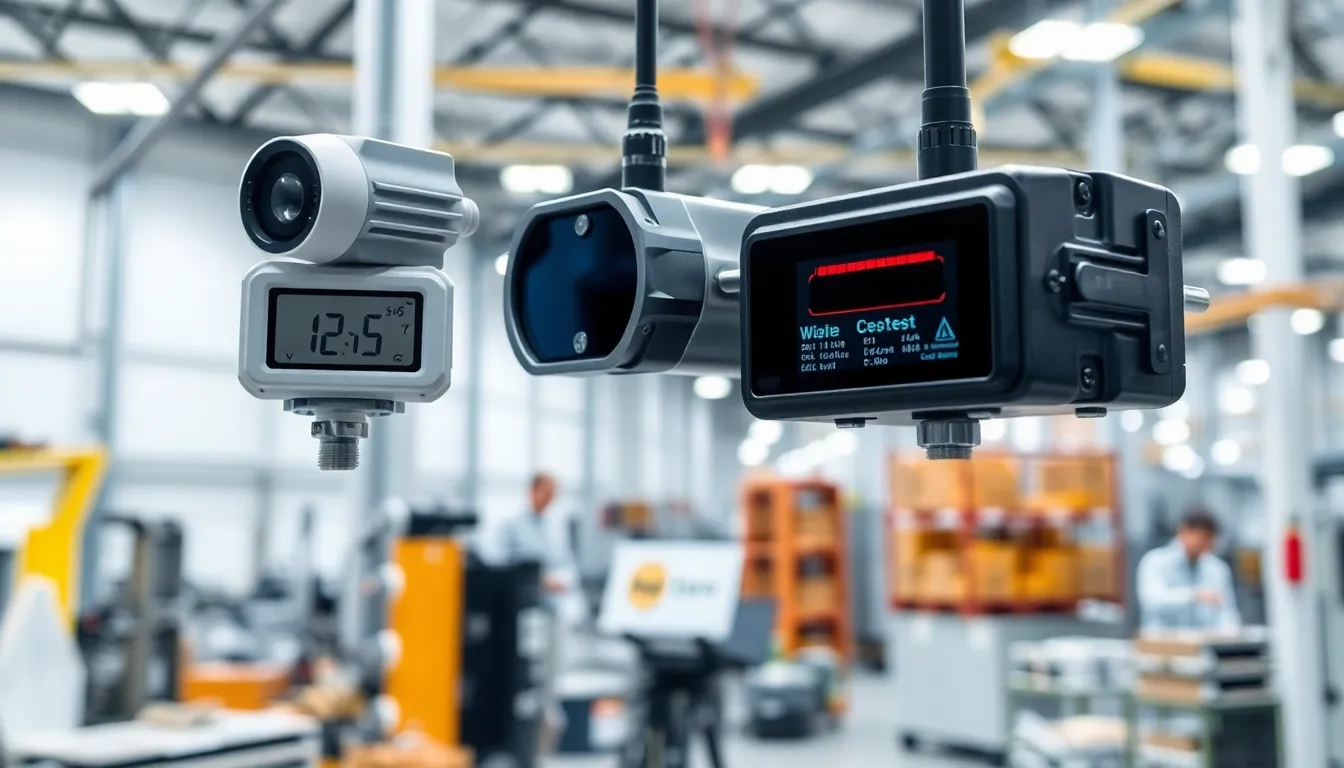In a world where even your fridge can remind you to buy milk, the Internet of Things (IoT) is revolutionizing efficiency like never before. Imagine a life where appliances, vehicles, and even entire cities work together seamlessly, cutting down waste and saving time. Sounds like a sci-fi movie, right? Well, it’s happening right now, and it’s making life smoother than a buttered biscuit.
Table of Contents
ToggleOverview of IoT Efficiency Improvements
IoT efficiency improvements enhance resource management across various sectors. By enabling real-time data collection and analysis, smart devices optimize energy usage in homes and businesses. Manufacturing industries adopt IoT solutions that reduce operational costs, streamline workflows, and minimize downtime.
Smart sensors monitor equipment performance, identifying maintenance needs before failures occur. This predictive maintenance approach saves time and extends the lifespan of machinery. Retail environments benefit from improved inventory management, ensuring products are always available while reducing excess stock.
Healthcare systems use IoT devices to monitor patient vitals remotely, leading to timely interventions and reduced hospital visits. Connected wearables track fitness data, motivating users to maintain healthier lifestyles. Transportation also sees improvements; smart traffic systems reduce congestion and emissions through data-driven traffic management.
Cities implement IoT technology for smart lighting and waste management. Smart streetlights adjust brightness based on pedestrian presence, conserving energy. Waste bins equipped with sensors signal when they’re full, optimizing collection routes and schedules.
Data analytics drive IoT innovations, revealing insights that enhance operational efficiency. Organizations leverage this information to make informed decisions, leading to continuous improvement. As IoT adoption increases, efficiency levels rise across multiple domains.
Investments in IoT infrastructure yield significant long-term benefits. Enhanced connectivity fosters collaboration between devices, further amplifying efficiency. The future promises even greater advancements, transforming how industries operate and individuals engage with their environments.
Key Technologies Driving IoT Efficiency

Multiple technologies boost IoT efficiency in various sectors, helping organizations optimize resource management and decision-making.
Sensor Innovations
Sensors play a critical role in the functionality of IoT devices. Smart sensors collect real-time data, enhancing visibility into operations across sectors like manufacturing and healthcare. They facilitate predictive maintenance by monitoring equipment conditions. These sensors are crucial for effective inventory management in retail settings. In agriculture, they help monitor soil moisture and temperature, improving crop yields. Adoption of advanced sensors leads to reduced waste and increased operational efficiency.
Edge Computing
Edge computing enhances IoT performance by processing data closer to the source. This approach minimizes latency and bandwidth usage, ensuring timely responses from applications. Devices communicate seamlessly without relying heavily on cloud infrastructure. It supports critical applications, like remote patient monitoring in healthcare, allowing immediate decision-making. Edge computing also benefits smart cities, managing traffic signals in real-time to reduce congestion and emissions. Companies relying on this technology can achieve significant improvements in speed and efficiency.
Benefits of IoT Efficiency Improvements
IoT efficiency improvements provide significant advantages across various sectors. These benefits include cost reduction and energy savings, which transform both operational processes and consumer experiences.
Cost Reduction
Cost reduction emerges from implementing IoT solutions. Businesses experience lower operational expenses due to improved efficiency. Real-time data collection allows for proactive decision-making, minimizing waste and unnecessary expenditures. For instance, predictive maintenance extends the lifespan of machinery, reducing repair costs and downtime. Companies save on labor and resources through automation and streamlined processes, leading to more effective resource management. Enhanced inventory management lowers holding costs by optimizing stock levels and reducing over-ordering. The cumulative savings from these improvements contribute to increasing profit margins and better financial stability.
Energy Savings
Energy savings represent a key benefit of IoT advancements. Smart devices optimize energy consumption in homes and businesses, cutting down on waste. For example, smart thermostats adjust heating and cooling based on user behavior, leading to substantial reductions in energy bills. In manufacturing, IoT sensors identify inefficiencies in energy use, allowing companies to implement targeted improvements. Additionally, smart lighting systems adapt to ambient conditions, significantly lowering electricity consumption. Real-time monitoring enables organizations to track energy usage and make informed adjustments, further enhancing sustainability efforts. The collective impact of these innovations fosters a more energy-efficient environment, benefiting both the economy and the planet.
Challenges in Implementing IoT Solutions
Implementing IoT solutions presents various challenges that organizations must navigate. These challenges can impact the efficiency improvements that IoT technologies aim to deliver.
Security Concerns
Security concerns rank high among the challenges related to IoT. Many devices connect to networks, increasing vulnerability to cyber threats. With sensitive data being transmitted, unauthorized access can compromise user privacy and operational integrity. Organizations often contend with the need to implement robust security measures, including encryption and authentication protocols. Awareness of potential risks encourages proactive management of vulnerabilities. Establishing a clear security framework ensures that devices and networks remain safeguarded.
Interoperability Issues
Interoperability issues pose significant challenges in integrating diverse IoT devices. Numerous manufacturers produce devices with different standards and protocols, leading to compatibility problems. Such fragmentation complicates communication between devices and hinders effective data exchange. Organizations must prioritize selecting devices that adhere to common standards or invest in middleware solutions that bridge compatibility gaps. Aligning technology strategies across departments helps foster an interconnected environment. Ensuring seamless communication among devices enhances the overall effectiveness of IoT deployments.
Case Studies of Successful IoT Efficiency Improvements
Real-world applications of IoT demonstrate its impact on efficiency across various sectors. The following examples highlight how specific industries benefit from IoT technologies.
Manufacturing Sector
In the manufacturing sector, companies like Siemens utilize IoT to enhance productivity through predictive maintenance. Smart sensors collect data on machinery performance, allowing for timely interventions before failures occur. This proactive approach reduces downtime significantly, and manufacturers report improved operational efficiency. By analyzing real-time data, organizations optimize their supply chains and reduce waste, leading to cost savings. Furthermore, factories implement IoT-driven automation, streamlining processes and increasing output without compromising quality.
Smart Cities
Cities worldwide embrace IoT to foster sustainability and efficiency in urban management. Barcelona, for instance, deploys smart waste management systems that monitor bin levels, ensuring timely collection and minimizing overflow. This technology reduces operational costs and lowers environmental impact. Smart lighting solutions in these cities adjust brightness based on occupancy, enhancing energy conservation. Traffic management systems utilize real-time data to alleviate congestion, improving commuter experiences. These advancements depict a future where urban living is more efficient, connected, and responsive to citizen needs.
The Internet of Things is reshaping how industries operate and individuals interact with their environments. Its efficiency improvements lead to significant cost savings and enhanced resource management across various sectors. By leveraging real-time data and smart technology, organizations can optimize operations and reduce waste.
While challenges like security and interoperability remain, the benefits of IoT adoption far outweigh these hurdles. As businesses and cities continue to invest in IoT infrastructure, they pave the way for a more efficient and sustainable future. The ongoing evolution of IoT technology promises to unlock even greater potential, driving innovation and improving quality of life worldwide.



